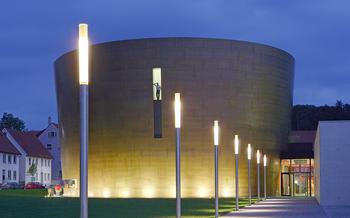Ulm, a captivating city in southern Germany, beckons travelers with its rich history, architectural marvels, and scenic landscapes. Explore the imposing Ulm Minster, the world's tallest church, and marvel at its intricate Gothic architecture. Stroll along the picturesque banks of the Danube River, enjoying panoramic views of the city skyline. Immerse yourself in art at the Kunsthalle Weishaupt, showcasing a diverse collection of modern and contemporary masterpieces. Don't miss the opportunity to ascend the Ulmer Münster for breathtaking city views. For a taste of local history, visit the Ulm Museum, housing fascinating exhibits on the city's past. Indulge in regional culinary delights at one of the traditional restaurants or savor a refreshing pint of beer at a cozy tavern. Whether you're a history buff, an art enthusiast, or simply seeking a charming European getaway, Ulm promises an unforgettable travel experience.
Ulm
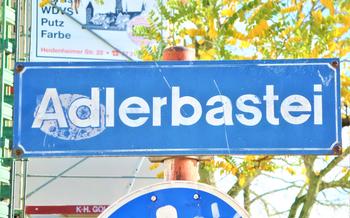
Adlerbastei
Ulm's picturesque skyline is adorned by the imposing Adlerbastei, a magnificent fortification that stands as a testament to the city's rich history and architectural prowess. Built in the 15th century as part of the city's defense system, this mon...
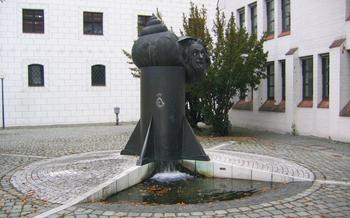
Albert Einstein Fountain
In the heart of Ulm, Germany, stands a remarkable tribute to one of history's most brilliant minds - the Albert Einstein Fountain. Inaugurated in 1984, this captivating fountain not only serves as a stunning work of art but also pays homage to the...
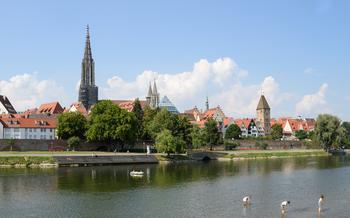
Blautopf Spring (not in Ulm but nearby in Blaubeuren)
In the heart of southern Germany, nestled along the scenic Danube River, lies the charming city of Ulm. While Ulm is renowned for its awe-inspiring Gothic cathedral, it also holds a hidden gem just a short distance away – the Blautopf Spring, an e...

Botanical Gardens of the University of Ulm (Botanischer Garten der Universität Ulm)
The Botanical Gardens of the University of Ulm is a haven of tranquility nestled within the bustling city of Ulm. Established in 1981, the garden is an integral part of the university's Faculty of Natural Sciences and serves as a valuable resource...
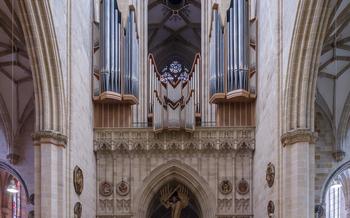
Danube River Promenade
Ulm's Danube River Promenade is a picturesque walkway that offers a delightful stroll along the banks of the majestic Danube River. Steeped in history, the promenade dates back to the 19th century when it was built to connect the city center with ...
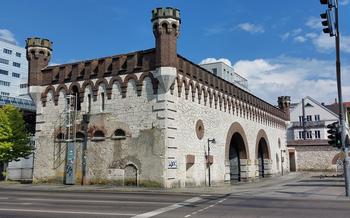
Federsee Museum
Nestled in the heart of the Federsee region, the Federsee Museum stands as a testament to the rich history and cultural heritage of this unique landscape. Its exhibits and displays take visitors on a journey through time, from the earliest settlem...
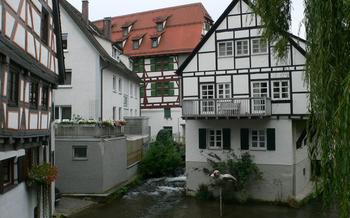
Fishermen’s Quarter (Fischerviertel)
In the heart of Ulm, nestled along the picturesque banks of the River Danube, lies the enchanting Fishermen’s Quarter (Fischerviertel). Steeped in history and brimming with charm, this vibrant quarter invites you on a journey through time. Discove...

Kunsthalle Weishaupt
The Kunsthalle Weishaupt, a renowned art museum in Ulm, Germany, was founded in 1987 by Harald Weishaupt, a passionate art collector and philanthropist. Driven by his vision to create a platform for modern and contemporary art, Weishaupt establish...
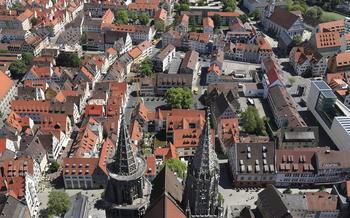
Laupheim Palace (Schloss Großlaupheim)
Nestled in the heart of Laupheim, Germany, stands the majestic Laupheim Palace, a testament to the region's rich history and cultural heritage. Built in the 16th century, this architectural masterpiece boasts a captivating blend of Renaissance and...
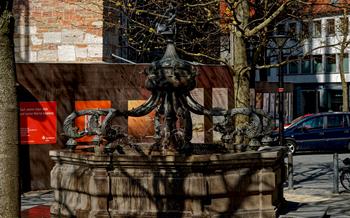
Legoland Germany Resort (not in Ulm but in Günzburg)
Legoland Germany Resort, located in Günzburg, Bavaria, is a must-visit destination for families and Lego enthusiasts alike. The resort opened its doors in 2002 and has since become one of the most popular theme parks in Germany, attracting over 1....
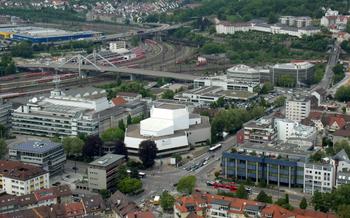
Ludwig Erhard Bridge
Ulm, a city steeped in history, traces its roots back to the Roman Empire. Strategically situated at the confluence of the Blau and Danube rivers, Ulm's fortunes have long been intertwined with these waterways. The Danube, Europe's second-longest ...
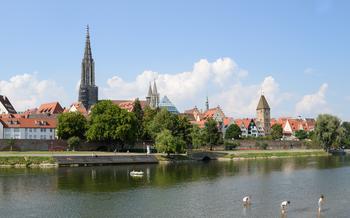
Memmingen Old Town (Altstadt Memmingen)
Memmingen Old Town: A Historical Gem in Swabia:
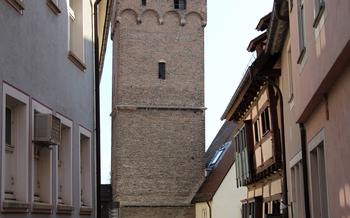
Metzgerturm (Butchers' Tower)
Standing tall and proud at the entrance of Ulm's old town, the Metzgerturm, or Butchers' Tower, is a magnificent testament to the city's rich history and architectural prowess. Constructed in the 14th century, this imposing structure served as a g...
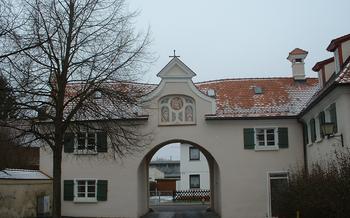
Söflingen Abbey
Nestled amidst the idyllic landscapes of Ulm, Germany, lies the enchanting Söflingen Abbey, a testament to the region's rich cultural heritage. Founded in the 12th century by the Benedictine monks, this former monastery has stood as a beacon of sp...
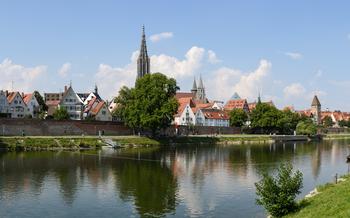
St. George's Choir Boys (Ulmer Spatz)
Ulm Minster, a majestic Gothic masterpiece, stands as the tallest church in Germany and a testament to the architectural prowess of the Middle Ages. Its construction began in 1377 and spanned over five centuries, leaving an indelible mark on the c...
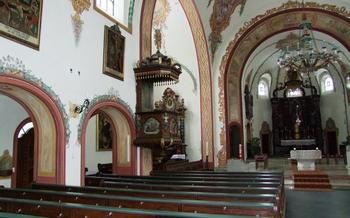
St. Michael’s Church
Ulm Minster, a masterpiece of Gothic architecture, stands as a testament to the skill and devotion of medieval builders. Its awe-inspiring façade, with its intricate carvings and soaring spires, invites visitors to explore its rich history and arc...

The Archaeopark Vogelherd (not in Ulm but in Niederstotzingen)
The Archaeopark Vogelherd is a unique and fascinating destination that offers a glimpse into the lives of our prehistoric ancestors. Located in Niederstotzingen, Germany, the park is home to the Vogelherd Caves, which have yielded a wealth of Ice ...

The Biberach Market Square (Marktplatz Biberach)
The Biberach Market Square, or Marktplatz Biberach, is a vibrant and historic square located in the heart of Ulm, Germany. It holds a significant place in Ulm's history, serving as a central trading hub and witnessing numerous pivotal events. Toda...
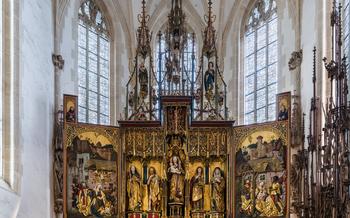
The Blaubeuren Abbey (Kloster Blaubeuren)
In the heart of the Swabian Alb, nestled along the banks of the Blau River, lies the enchanting Blaubeuren Abbey, a testament to the enduring legacy of Benedictine monasticism. Founded in 1085 by Count Hartmann I of Dillingen, the abbey flourished...
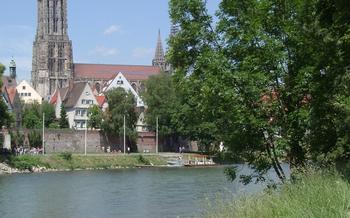
The Bread Culture Museum (Museum der Brotkultur)
Situated in the heart of Ulm, Germany, the Bread Culture Museum (Museum der Brotkultur) is a fascinating tribute to the world of bread and its rich history. Founded in 1953, the museum is housed in a former mill, adding to its charm and authentici...
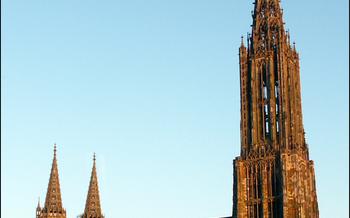
The Charlottenhöhle Cave (not in Ulm but in Hürben)
Nestled in the heart of the Swabian Alb, Germany, lies a hidden gem – the Charlottenhöhle Cave. This natural wonder invites visitors to embark on an awe-inspiring journey into the depths of the earth, revealing a subterranean world of stunning roc...
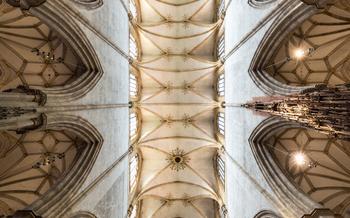
The Danube Swabian Museum (Donauschwäbische Zentralmuseum)
The Danube Swabian Museum (DSZM) in Ulm, Germany, is a captivating institution dedicated to preserving and showcasing the rich heritage of the Danube Swabians, an ethnic German group that once thrived in the Danube River region of Central and East...
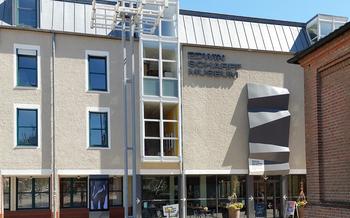
The Edwin Scharff Museum
The Edwin Scharff Museum, a renowned institution dedicated to contemporary art, stands as a testament to the vibrant cultural scene of Ulm, Germany. Founded in 1987, the museum is named after Edwin Scharff, a distinguished German artist whose work...
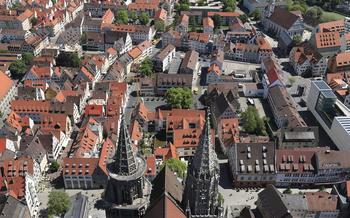
The Heidenheim Castle (Schloss Hellenstein)
Standing majestically atop a hill, the Heidenheim Castle, also known as Schloss Hellenstein, is a testament to the rich history and architectural heritage of Germany. Its origins can be traced back to the 12th century when it was constructed as a ...
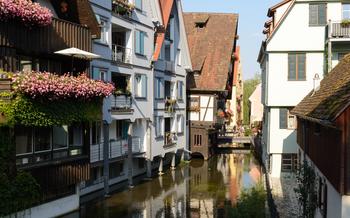
The Leaning House (Schiefes Haus)
Constructed in 1412, the Leaning House is a testament to the ingenuity and craftsmanship of medieval builders. Originally designed as a merchant's residence, the building served as a warehouse and trading post for centuries. However, the house's m...
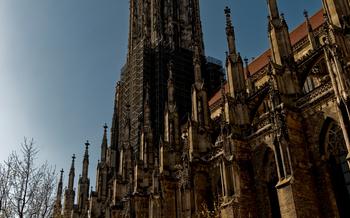
The Lichtenstein Castle (not in Ulm but in the region)
Deep in the enchanting forests of Baden-Württemberg, Germany, nestled atop a towering cliff, stands the majestic Lichtenstein Castle, an architectural marvel that seems to have sprung from the pages of a Brothers Grimm fairytale. Its neo-Gothic tu...
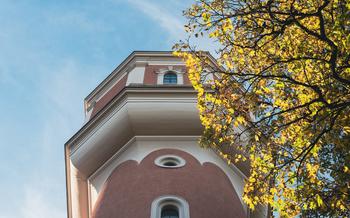
The Neu Ulm Water Tower (Wasserturm Neu Ulm)
The Neu Ulm Water Tower stands as a testament to the ingenuity and engineering prowess of its time. Its unique design blends elements of Art Nouveau and Modernism, showcasing a transition from traditional to contemporary architectural styles. The ...
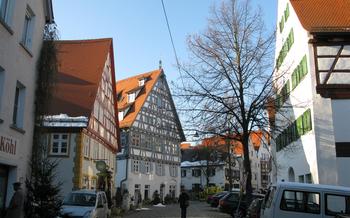
The Roggenburg Abbey
Nestled in the picturesque countryside of Bavaria, Roggenburg Abbey stands as a testament to the rich history and cultural heritage of Germany. Founded in the 12th century by Benedictine monks, the abbey has played a pivotal role in the religious ...

The Ulm Library (Stadtbibliothek Ulm)
The Ulm Library, known locally as Stadtbibliothek Ulm, stands as a beacon of knowledge and history in the heart of the city. Its roots can be traced back to the 16th century when it was founded as a collection of books and manuscripts belonging to...
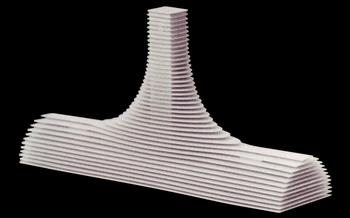
The Ulm School of Design (Hochschule für Gestaltung Ulm)
The Ulm School of Design stands as a testament to the transformative power of design. Established in 1953 in the city of Ulm, Germany, this pioneering institution emerged as a beacon of modernist design, deeply rooted in the legacy of the Bauhaus ...
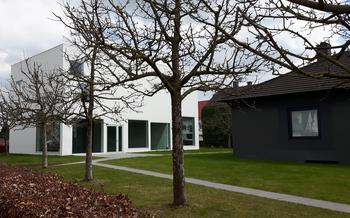
The Walther Collection
Nestled in the heart of Ulm, Germany, lies a treasure trove of modern and contemporary art that often goes unnoticed by the casual tourist. The Walther Collection, housed in a striking modern building, is a testament to the passion and dedication ...
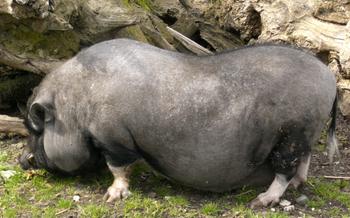
Tiergarten Ulm (Zoo)
Nestled in the picturesque city of Ulm, Tiergarten Ulm stands as a vibrant haven for wildlife and nature enthusiasts alike. Its rich history dates back to 1934, when it was initially established as a modest bird sanctuary. Over the years, Tiergart...

Ulm Central Station (Hauptbahnhof Ulm)
The Ulm Central Station, a magnificent example of architectural resilience, stands as a symbol of the city's rebirth after the devastation of World War II. Once the heart of Ulm's bustling railway network, the station suffered extensive damage dur...
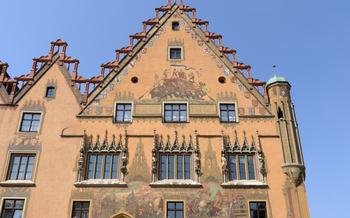
Ulm City Hall (Rathaus)
Standing tall in the heart of Ulm, Germany, the Ulm City Hall (Rathaus) is a testament to the city's rich history, architectural prowess, and cultural significance. Constructed between the 14th and 16th centuries, this magnificent Gothic masterpie...
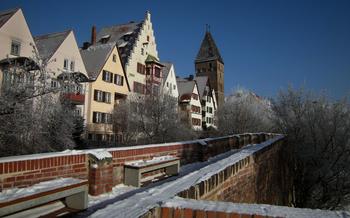
Ulm City Wall (Stadtmauer)
Ulm's City Wall, known as the Stadtmauer, stands as a testament to the city's rich history and resilience. Constructed in the 14th century, this impressive fortification once served as a protective barrier against invading forces. Its strategic lo...
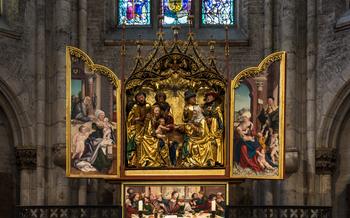
Ulm Minster (Ulmer Münster)
In the heart of Ulm, Germany, stands the majestic Ulm Minster, a testament to human ingenuity and devotion. This colossal Gothic masterpiece, soaring over the city's skyline, has captivated visitors for centuries with its intricate details and arc...
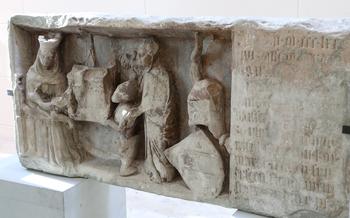
Ulm Museum (Ulmer Museum)
Located in the heart of Ulm, Germany, the Ulm Museum stands as a testament to the city's rich history and vibrant cultural heritage. Founded in 1884, the museum initially occupied the former city hall before moving to its current location in 1987....
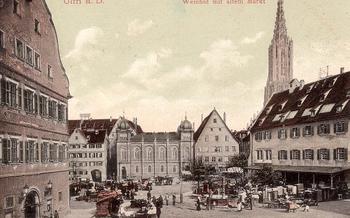
Ulm Synagogue
The Ulm Synagogue stands as a testament to the rich history of the Jewish community in Ulm, Germany. Built in 1873, the synagogue served as a spiritual and communal center for the city's Jewish population until its destruction during Kristallnacht...

Ulm Theatre (Theater Ulm)
The Ulm Theatre (Theater Ulm) stands as a testament to the city's rich cultural heritage and architectural prowess. Built in the 19th century, the theater's historical significance is intertwined with Ulm's position as a major trading and cultural...
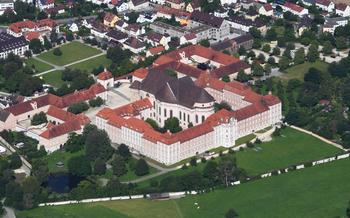
Wiblingen Abbey
Wiblingen Abbey stands as a testament to the grandeur of Baroque architecture, a masterpiece nestled in the heart of Ulm, Germany. Founded in 1093 by the Benedictine order, the abbey has a rich and storied history, serving as a center of religious...
